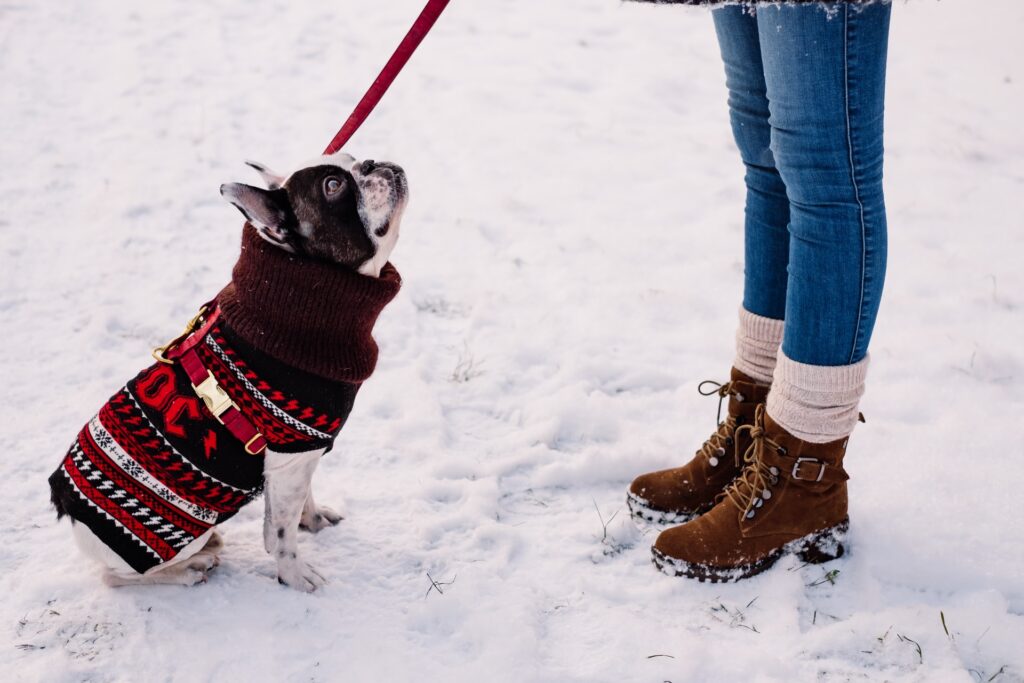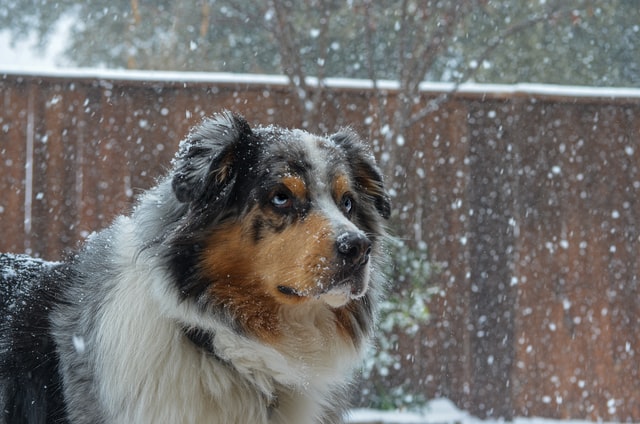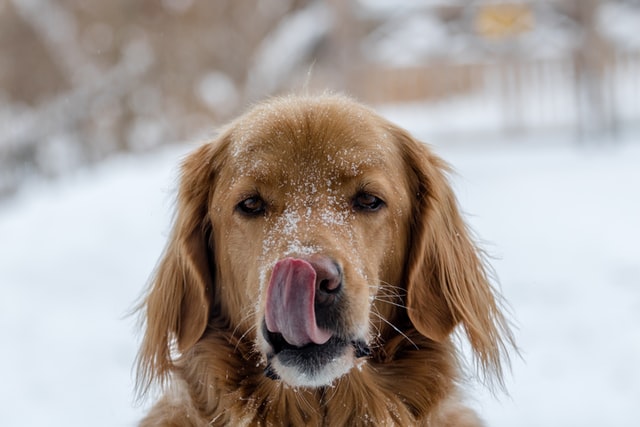With temperatures dropping and a winter season on its way, our furry companions need additional care and love. Here, we list down our top tips on keeping your doggy companions warm and comfortable on these winter walks. Are you ready to dive into it?
Our doggy friends always love to roam outdoors. For the most part, we also love this activity with them, right? However, the winter climate is somewhat terrible for our little pals to walk on, and there is no safe and exact outdoor temperature for your canine.
So, we at Improve Dogs always care for the health and wellness of your little furry friends, and we have curated some top tips to walk your dog in winter.
- Knowing The Basics: The Winter And Dogs
- 11 Tips for Walking Dogs in Winter
- 1. Knowing The Outdoor Temperature
- 2. Knowing Your Dogs
- 3. Physical Conditions
- 4. Lookout For The Warning Signs
- 5. Keeping Your Canine Warm
- 6. DayLight Walks Works
- 7. Limit Snow Intake
- 8. Watch For Frostbite
- 9. Watch Out For Any Ailments
- 10. Do Not Let Your Canine Walk On Frozen Deeps
- 11. Follow Proper Safety Measures
- Final Thoughts!
Knowing The Basics: The Winter And Dogs
It is significant to understand how much the wind chill reduces the feel of the exact temperature. If it is snowing and it is particularly wet snow, it can be more uneasy for your dogs. The body temperatures of dogs drop much rapidly with any moisture.
As a pet parent, you should know more about the winter season and doggy friends in conjunction. This way, you can reduce their walking time.
11 Tips for Walking Dogs in Winter
Below are the tips that will help you take your dog for a walk in a cold weather. Make sure you follow the proper safety measures before going out with your dog in winter.
You might think that dogs have heavy layer of fur on their body and it won’t be a big problem for them to walk in winter, however, this is not the case. Every breed has a different body temperature and hence it requires caution to let your dog dive into the colder environment.
1. Knowing The Outdoor Temperature
Did you know the most healthy, medium-sized, or big canines can walk for 30-minutes if the weather is near 20 degrees F. If the temperature is between 20 to 32 degrees F, pups should restrict the walk to 15 or 20 minutes.
However, if it is less than 0 degrees, do not take your canine out for a walk.
2. Knowing Your Dogs
Interestingly, the age, breed, and fitness of your dog depend on safe winter walks. Keep in mind that pups and senior canines are much more susceptible to the frigid weather because their bodies can not restrain their body temperatures well. If it is below freezing point, do not take them outdoors.
Luckily, some dog breeds have better tolerance to winter weather. Dog breeds such as German Shepherds, St. Bernards, and Akitas have bulky coats that aid them from the cold in winter. However, small pups and short-haired canines require a warm sweater or jacket for added protection and warmth.
3. Physical Conditions
Some physical ailments such as arthritis or hip dysplasia in your dogs may get worsened in the winter season. So, pet parents need to keep their beloved pets inside where it is cozy.
4. Lookout For The Warning Signs
The best piece of advice that we can provide you is to understand your canine and pay attention to the warnings they are delivering you. Some of the warning signs include:
- Shivering
- Standing In A Hunched Posture.
- Raising their paw(s) Off the Ground.
- Giving Verbal Cues
- Whining
- Barking
- Lethargy
- Weakness
- Slowed Breathing
- Showing Resistance To Go Out
5. Keeping Your Canine Warm
When the temperature gets colder, let the fur of your canine grow in the winter. Short-haired breeds, pups, or seniors might need a winter dog jacket. Make sure you wipe the arms, paws, and belly of your dog after a winter walk. The sand from the paths and wetness from rain or snow can irritate their fur.
Also, never leave your furry friend in the car. It is not safe to leave them alone, whether it is hot or cold.
6. DayLight Walks Works
If at all practical, plan an everyday walk with your doggy friend in the daylight hours. Not only will it possibly be warmer for you and your canine, but you will be more noticeable to vehicles in the daylight.
7. Limit Snow Intake
It may seem harmless, but snow is not suitable for your canine to eat up in huge quantities, and we are not just discussing the sandy type. A tiny piece of snow is unlikely to do any harm, but consuming snow does have its dangers.
Unfortunately, snows are antifreeze and contain chemicals or some other impurities. Have you heard about winter blip disease? The excessive intake of snow can cause intestinal trouble, involving diarrhea and vomiting in some canines. So, hydrate your puppy before going for the winter walk and carry along some fresh water and a travel pot. Water will be way better thirst-quenching than snow for your canine, anyhow.
8. Watch For Frostbite
Did you know frostbite can be a real danger to pets? Dogs are always like kids and might be having too much joy in the snow. So, it is more likely to occur in them. All you have to do is watch their ears, nose, paws, and tail, as these are the most common spots for frostbite to occur.
Frostbitten skin is cold and pale. Also, it often turns ruddy and swollen after it dries a bit. If you doubt your canine has frostbite, give a warm, not hot, rag to the affected region once inside, and also cover with a sheet. Also, do not let your pup lick, scratch, or chew at the affected area, as this can lead to disease or result in permanent harm. However, if you are anxious, call your vet.
Related: How To Stop Nail Bleeding In Dogs?
9. Watch Out For Any Ailments
Cold, winter climate can worsen ailments such as arthritis in your canine. If your dog suffers from arthritis, you may need to keep winter walks shorter and prevent slippery or rugged walkways.
If your canine lumps or looks stiff in the morning or on walks, give them a dog arthritis supplement, especially if your canine is aged.
10. Do Not Let Your Canine Walk On Frozen Deeps
The frost may not be hard enough to take their weight. If your canine does fall through the ice, never be attracted to go in after. If possible, motivate them to swim back to you.
11. Follow Proper Safety Measures
The final tip for every pet parent who likes to take their furry friends on winter walks is to make them safe.
Regularly inspect their signals, belts, and harnesses and make sure they are all working safely. If it is icy outside, it can be risky to do up lead belts and connect them to collars and leashes, so doing this indoors is practical! A wet climate may also make metal clips rust.
Final Thoughts!
Winter is a pleasant climate for everyone. It is one of the rejuvenating seasons! However, our little furry friends may sometimes be uncomfortable with these frigid temperatures. We hope this guide helped make your winter walks with your dogs easy and entertaining.
Also, don’t let the cold climate keep your dog from getting a workout. You may have to restrict your walk to only 5 or 10 minutes, but make sure to get them out if it’s just for a little bit when the temperature is appropriate.
The winter is coming!
The form you have selected does not exist.
Pin It:



